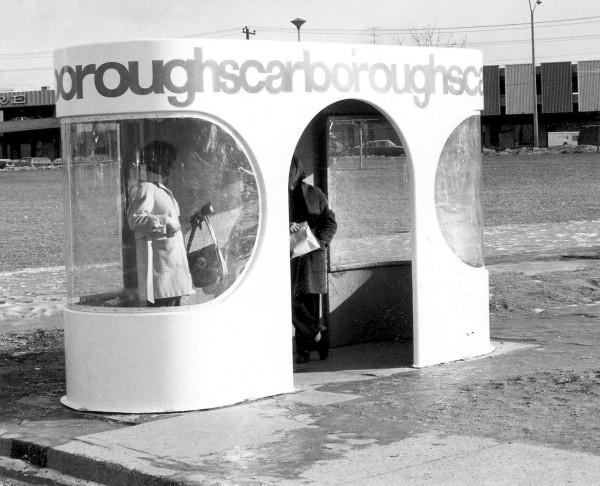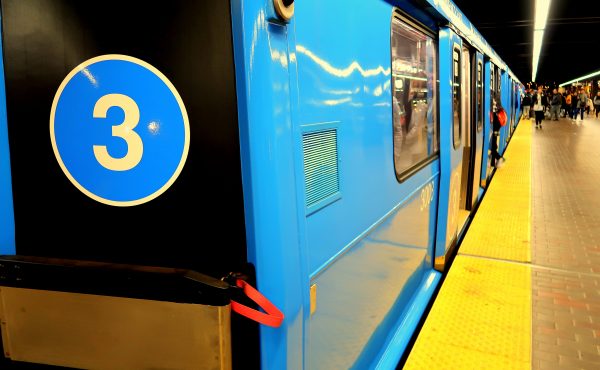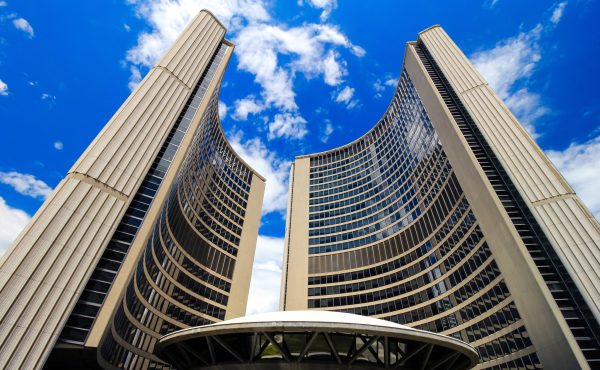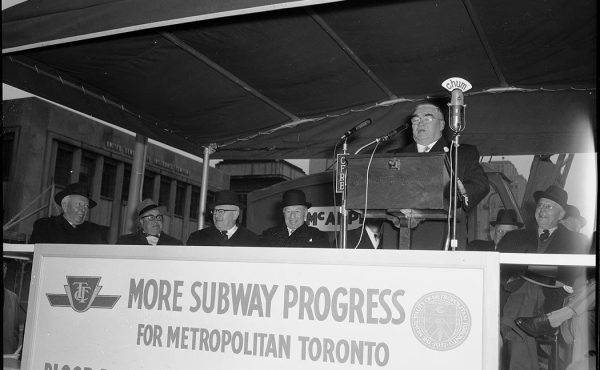For the last five months Spacing has been investigating the political maneuvering behind the decision to build the Scarborough subway. This is part 1 of 5 that will run this week.
In the 2014 mayoral election, the Scarborough subway extension has become a key wedge issue, distinguishing Olivia Chow and David Soknacki from John Tory, Karen Stintz and Rob Ford. But in a revealing alignment of the political planets, all three parties in the provincial election have lined up behind the multi-billion dollar scheme, approved by Toronto city council last fall after months of controversy (see timeline).
The proponents insist the $3.1 billion project, which will replace the derelict Scarborough RT, is an opportunity to bring rapid transit to a subway-free suburb.
Yet as Spacing will reveal in detail over the next few days, Premier Kathleen Wynne and transportation minister Glen Murray ignored their own technical experts and quietly encouraged Toronto city council to tear up an $8.4 billion transit master agreement signed by the two levels of government in November, 2012. The alternative: a costly three-stop subway instead of a fully-funded seven-stop LRT situated within walking distance of more residents in more communities.
Through a series of freedom of information (FOI) requests to the City of Toronto, Metrolinx and the Ontario government, Spacing has obtained dozens of internal documents, emails, and reports about the genesis and execution of the Scarborough subway decision. We will report on the contents over the next several days.
The documents show a government that blithely disregarded inconvenient financial and technical information to pursue a politically-motivated goal. They also reveal how a freelancing TTC chair, Karen Stintz, and a wildly vacillating city council ignored their own staff’s expert advice and committed Toronto taxpayers to a project whose true costs are still not fully understood.
These as-yet unknown expenses will be added to the $85 million in sunk costs associated with planning work done on the now cancelled Scarborough LRT/LRV maintenance-storage facility. Metrolinx has told the City of Toronto that it must absorb those expenses on top of the estimated $1 billion in additional cost associated with the subway project.
The provincial government and Metrolinx, moreover, redacted several key documents, including a June, 2013, power point presentation outlining the implications of the decision, prepared by senior Metrolinx planner Jack Collins. (see PDF for more details)
They are not the only documents about the Liberals’ transit plans that remain under lock and key, and therefore beyond the reach of public scrutiny. The Liberal government, which previously sought to block the release of documents relating to the gas plant cancellations, filibustered three requests for information moved by NDP transportation critic Rosario Marchese last December. They include:
- a request for all documents generated from July 15, 2013, to September 10, 2013 that pertain to the plan to use subway “technology” in the Scarborough RT corridor;
- “all documents between August 1, 2012, and November 30, 2012, related to the operation of the Eglinton Crosstown”
- “any market studies conducted between January 1, 2010, and December 3, 2013, related to ridership projections for the air-rail link.”
The government only agreed to release documents related to the latter request, which can be found here and here.
All legislative business died when the government dropped the writ, which means Ontarians will go to the polls, yet again, with something far less than a complete understanding of the transit spending decisions being made in their name, and with their tax dollars.
preface: Timeline
Part 1: The political machinations behind the Scarborough Subway
Part 2: “It’ll be over my dead body that Scarborough goes wanting for high speed transit”
Part 3: Ignoring the projected high costs and low ridership
Part 4: Won’t somebody think of Bombardier?
Part 5: The bottom line on the Scarborough subway line






7 comments
Thank you for taking the initiative to do this. Shame on both sets of governments and to those involved for wanting to rip up a fully funded transit plan. If we’re lucky saner heads will prevail and the LRT will be built instead.
If polls are to be believed, we are likely headed for another minority provincial government providing continued uncertainty at one level. Great article, can’t wait for Part 2.
Yes, this is excellent initiative and work and vitally important because it really has deflected sound planning (relatively sound for Caronto) in favour of costly-to-us political opportunism. But with the politricks and complicity from so many, how to respond? I’ve been mulling going after the credit ratings of both the City and the province using this excess as an example; another being our collective avoidance of the Vehicle Registration Tax and some user pay for the mobile furnaces, which Vancouver estimated c. 15 years ago as being about $2700 per car per year of avoided cost/subsidy.
Tell others about this series folks; thanks again.
Great expose. I am not surprised about this. I wish news of the complex politics behind our city’s inability to implement sound transit plans would be distributed to a more mainstream audience across the region. It’s disgusting. Our political system needs to change from the top down to the very bottom local level. People I meet everyday including very educated people can’t understand why so many other developing world cities are light-years ahead of Toronto in terms of transit infrastructure. I always tell them that its politics and sadly many still believe it is Metrolinx or the TTC’s fault. Ed Levy , Toronto transit expert and historian, has a book coming out about the politics behind why the Toronto region has so many ideas about transit and time and again never implements them if anyone is interested in learning more about this in detail: http://levyrapidtransit.ca/
Where was the planned Scarborough LRT maintenance facility going to be? Could it be re-purposed as a bus garage?
It has been obvious for 4 years now that the SRT/LRT would not gain any politician public support – and no politician had enough political capital to waste on pushing this project forward. The big question is why they did not connect the SRT/LRT to an elevated ECLRT. This would have eliminated the despised mandatory transfer at Kennedy, provided the same number of stations and line length as the SRT/LRT plan, kept the STC station at STC, and done it for $1B less than the B-D subway extension. Steve Munro, among others, felt that Metrolinx wanted to build Eglinton as a grade-separated crosstown rapid transit line. I would really like to know why the most cost effective solution was not even publicly discussed.
“All three parties in the provincial election”? There are currently twenty registered political parties in Ontario, four of them with a candidate in every riding. See http://www.elections.on.ca/en-CA/CandidatesAndParties/PoliticalParties/ and http://theagenda.tvo.org/blog/agenda-blogs/how-many-parties-are-running-2014-ontario-election.